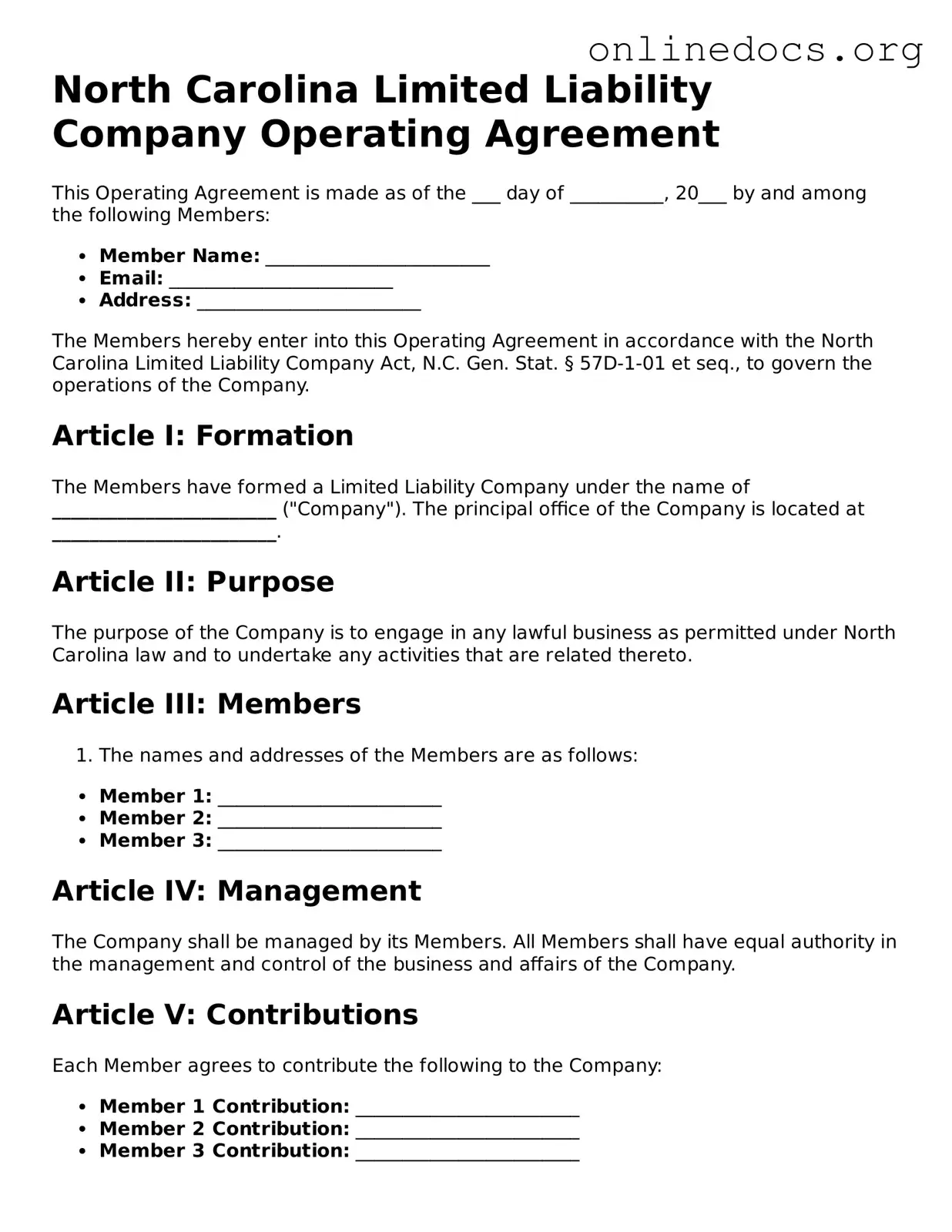The North Carolina Operating Agreement is similar to a Partnership Agreement. Both documents outline the roles, responsibilities, and rights of the parties involved. They serve as a roadmap for how the business will operate and how profits and losses will be shared. In a partnership, the agreement helps clarify the relationship between partners, just as an operating agreement does for members of an LLC. This ensures everyone is on the same page from the start.
Another document that resembles the Operating Agreement is the Bylaws of a corporation. Bylaws govern the internal management of a corporation, much like an operating agreement does for an LLC. They detail how decisions are made, how meetings are conducted, and how officers are appointed. Both documents aim to provide structure and clarity, ensuring smooth operations within the business entity.
A Shareholders’ Agreement is also comparable to the Operating Agreement. This document outlines the rights and obligations of shareholders in a corporation. Like an operating agreement, it addresses issues such as the transfer of shares and what happens if a shareholder wants to leave the company. Both agreements help prevent disputes by setting clear expectations among the parties involved.
The Joint Venture Agreement shares similarities with the Operating Agreement as well. This document is used when two or more parties come together for a specific project or business purpose. It defines the contributions of each party and how profits will be shared. Just like an operating agreement, it establishes a framework for collaboration and clarifies the roles of each participant.
When navigating the complexities of real estate, it is vital to understand the legal documents involved, such as the California Residential Lease Agreement. This document is designed to clarify the relationship between landlords and tenants, ensuring that both parties are aware of their rights and responsibilities regarding the rental property. For those looking to create or modify a lease, the process can be streamlined by using the residential lease agreement form available at californiapdfforms.com/residential-lease-agreement-form/.
A Limited Partnership Agreement is another document that aligns with the Operating Agreement. This agreement governs the relationship between general partners and limited partners in a limited partnership. It outlines the management structure and profit distribution, similar to how an operating agreement details the roles of LLC members. Both documents help protect the interests of all parties involved.
The Franchise Agreement is also akin to the Operating Agreement. This document outlines the relationship between a franchisor and franchisee. It specifies the rights and responsibilities of both parties, similar to how an operating agreement does for LLC members. Both agreements aim to create a clear understanding of the business relationship and operational guidelines.
Lastly, the Membership Agreement is comparable to the Operating Agreement. This document is often used in membership-based organizations to define the rights and responsibilities of members. Like an operating agreement, it establishes rules for governance and decision-making. Both documents help ensure that all members understand their roles and can work together effectively.
